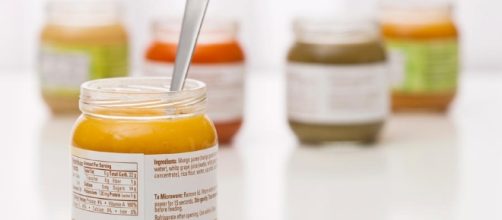Lead and lead poisoning have come to light in the past few decades as a real threat to industrially produced baby food safety. Parents go to great lengths to keep their children safe, trying hard to make sure that their children are not exposed to this or other toxic chemicals. However, a recent report published by the Environmental Defense Fund has shown that many popular baby foods contain indeed traces of lead.
A decade of research
The finding by the Environmental Defense Fund was based on a decade of data collection by the Food and Drug Administration.
From the years 2003 - 2013, the FDA collected information about 2,164 baby food samples. The Environmental Defense Fund then took this data and examined closely to check for the presence of lead in the baby foods samples. Through their investigation, they found that as many as 20% of the baby food samples contained traces of lead. Some particular foods were more likely to contain lead than others. More specifically, 89% of the grape juice, 86% of the sweet potatoes and 47% of teething biscuits were found to contain detectable measures of the toxic element.
Current FDA regulations
The Food and Drug Administration has laid out regulations about how much lead can be present in the food that we eat and none of the baby food samples exceeded this level.
However, if these foods are eaten on a consistent basis, the amount of lead that a baby is consuming becomes significant. The FDA is currently looking into making changes to the regulations to better reflect current research on lead and lead poisoning.
Other government agencies are pushing the FDA to make changes to its regulation as research has suggested that there is no safe level for lead consumption. However, eliminating lead from all food may pose a challenge. Any lead that is present in the soil in which crops are grown is taken into the plant causing the crop to then contain trace measurements of lead. This means that entire fields of crops may have to be discarded once the FDA puts a new regulation into place.
Lead poisoning: current regulation
The Center for Disease Control and Prevention has strict guidelines for lead levels in the blood. They advise that no amount of lead in the body is safe and that as little as 5 mL should be considered high. From previous research the CDC has concluded that even seemingly minute amounts of lead effect a child's IQ, ability to pay attention, and overall academic achievement.
To ensure the safety of the food hitting the supermarket shelf, the FDA is trying to better align its regulations with those of the CDC. This poses a challenge as the source of the lead in the baby food is still unknown so there is no effective way of ensuring that other samples do not contain this toxic material.
Without knowing where the lead is coming from, it can be challenging to attempt to eliminate it from all the baby food samples.
For all parents who are worried about whether or not the food they are giving their children contains lead, it can be helpful to ensure that their diet is high in fruits and vegetables, as generally recommended by pediatricians. Vitamins C, as well as iron and calcium, can all help inhibit lead absorption.


